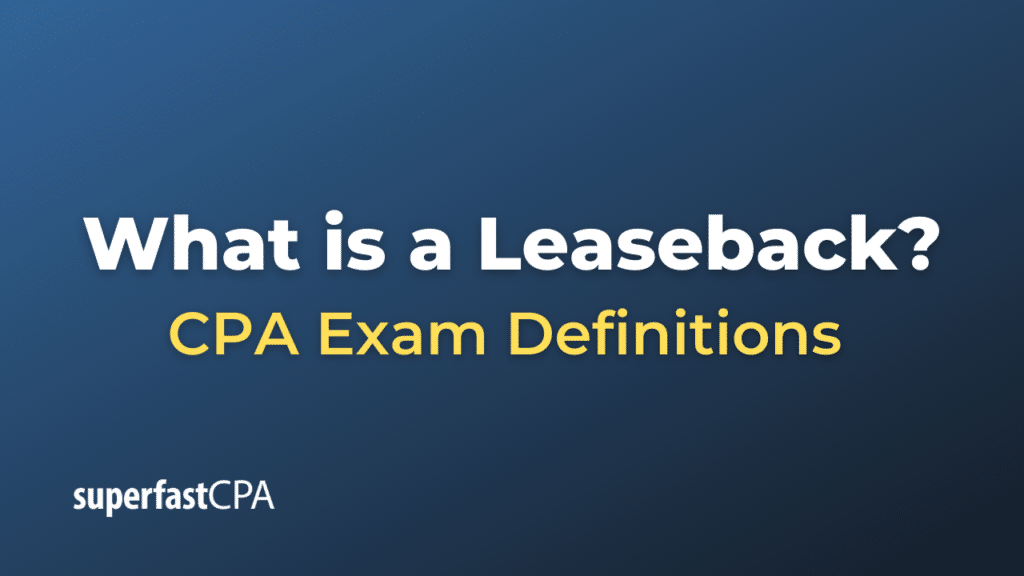Leaseback
A leaseback, also known as a sale-leaseback, is a financial transaction where an owner sells an asset to a buyer, and then leases the asset back from the buyer. This means the seller becomes the lessee and the buyer becomes the lessor.
The primary benefit of a leaseback arrangement is to free up capital. The seller-lessee can convert an asset from a fixed, illiquid investment into a liquid one (cash), while maintaining the right to use the asset. This is beneficial for companies that require more operational flexibility and need to invest cash in other areas of the business.
Leaseback transactions are most commonly done with real estate (like commercial buildings, offices, or factories), but can also be done with other types of assets, such as equipment or vehicles.
From the buyer-lessor’s perspective, a leaseback can be an attractive investment, especially if the lessee is a reliable, creditworthy tenant. The buyer-lessor gets to purchase an asset that generates steady, predictable rental income.
In accounting terms, the treatment of a leaseback can be complex, as it depends on the specific terms and conditions of the agreement, and whether it is classified as a finance lease or an operating lease under accounting standards. The specific treatment can affect various elements of a company’s financial statements, including assets, liabilities, revenues, and expenses. It’s always recommended to consult with an accountant or financial advisor for specific situations.
Example of a Leaseback
Suppose Company XYZ owns a factory valued at $10 million. The company decides it needs to free up some capital to invest in expanding its business operations. However, the factory is vital to its operations, and it can’t simply sell the property without disrupting its production. Therefore, it decides to go for a sale-leaseback arrangement.
Here’s what happens:
- Company XYZ sells the factory to Real Estate Investment Firm ABC for $10 million.
- Simultaneously, Company XYZ enters into a long-term lease agreement with Firm ABC to continue operating in the factory. XYZ agrees to make annual lease payments of $800,000 to ABC.
- The sale provides XYZ with the $10 million it needs for business expansion. Meanwhile, it can continue to operate from the same factory by making regular lease payments.
- Firm ABC, the new owner, now earns regular rental income from the property.
From a financial accounting perspective, Company XYZ would remove the factory from its balance sheet as an owned asset and would instead recognize a right-of-use asset and a lease liability (assuming that the lease is a finance lease or capital lease under current accounting standards). The lease payments would be split into interest expense and reduction of lease liability. The right-of-use asset would also be depreciated over time.
Firm ABC would recognize the factory as an owned asset on its balance sheet and would recognize lease income over the lease term.
This is a simplified example, and the actual accounting can be more complex, depending on various factors such as the terms and conditions of the leaseback agreement, and whether the lease is classified as an operating lease or a finance lease. As always, it’s recommended to consult with an accountant or financial advisor for specific situations.













